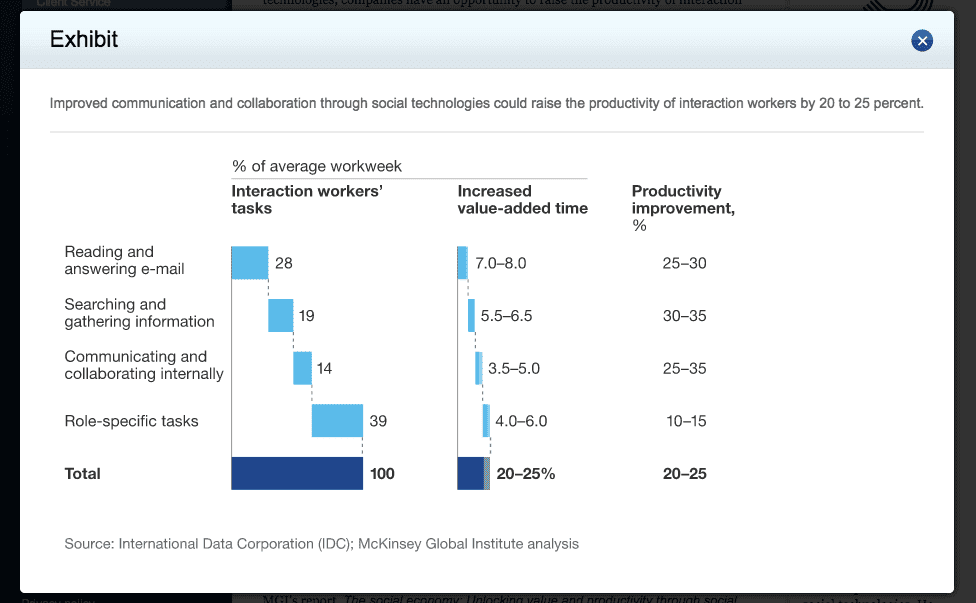August 10th, 2015
Wanna knock ‘em dead? Nothing’s more killer than effective communication within your team. Unfortunately, many teams still rely on a combination of largely unproductive (and equally boring) meetings, communicating through cluttered inboxes and chat messages, and praying that everyone is reading each other’s minds.
But you should leave the hail marys for the football field. The success of your project begins and ends with effective communication. A team where no one knows what the heck is going on is destined to crash and burn, and that’s not the type of killer strategies we suggest you employ here.
So, without further ado, we’ve compiled a list of easy, but crucial actions you can start right after you read this article to improve your team communication.
1. Say “No” to Email
For most people, inbox zero is a myth. The majority of people’s inboxes are cluttered, unorganized, and unruly. Relying on email to get messages across is not enough.
Think about it this way: everything in your personal inbox considers itself a priority. It’s all shouting for your attention right now.
And it’s not just your inbox. Your team members have the same problem.
If you want to improve your communication with your team, you’ve got to stop sending an endless stream of messages to their inbox. According to this statistic, the average worker spends 28% of their day trapped inside their inbox. If you extend that to a five-day work week, your team is spending approximately a day and a half in email alone.

Courtesy of McKinsey Global Institute analysis
What could you get done if you reclaimed that extra day and a half?
Instead of getting entangled in the bureaucracy of back and forth email, use it sparingly. Quick meetings and sync-ups are often more effective and keep your team moving instead of waiting for a response. Plus, if everyone starts reserving email for only highly important information, there will be less of it and more time to get actual work done.
2. Build Team Spirit
Be a team player. Foster an environment where everyone has the safety to speak up and feels invested in the team. Communication will soar. It’s the difference between your team feeling like nothing that they say will change anything versus knowing that their input will directly add to the success of a team.
You can spark this sense of ownership for each team member by getting personal. When you see beyond the one dimensional business personas of your team members and get to know who they are beyond the nine-to-five, you’ll make a connection.
Incorporate team building strategies that address the social side of your team members. An easy example is to take the team out for lunch. Working with a virtual team? Send each of your team members a $10 gift card and have everyone Skype in at the same time from their favorite coffee house. Once there, don’t discuss work– talk about personal passion projects.
Speaking of personal passions, you can also ask each team member to host a “Learn Something New” Tuesdays where they teach on a topic that they’re knowledgeable about. This taste of leadership will help each team member feel involved and validated in the community that you’ve created.
3. Be Transparent
Transparency is one of the most important principles for the modern teamwork model. No more closed door meetings– everyone should know what everyone else is doing. To do this, create a team runbook with everyone’s roles, responsibilities, and expectations clearly defined and then share it with your entire team.
Every team member should understand how they fit into the overall plan. Everyone should know where their role ends and the other person’s role begins.
If you want to get really radical, you can go the way of Whole Foods and Buffer and consider an open salary policy where all the team members know how much everyone is making. This type of extreme transparency also builds trust.

Open salaries spreadsheet, courtesy of Buffer
Something you can start today: Share feedback about your current project(s) with your team. This feedback can come from you, from the customer, or from another key stakeholder in the project. Teams value regular feedback about how their work is being received.
4. Create a Communicative Work Environment
Don’t be shy to ask for feedback from your team. Ask for ways to streamline repetitive processes. Even though you’re the manager, that doesn’t mean you have all the answers– and that’s okay. A great manager is always open and authentic.
Make sure that you spend time with each team member at least once a week. Ask for their individual feedback on the process. Listen actively and invite input. If your team member comes to you with a concern, take ownership in making sure any problems are resolved, and be sure to follow up.
Finally, encourage your team to communicate with each other. A great way to do this is with informal meetings. Researchers at Harvard Business Review found that teams who took coffee breaks together increased efficiency by as much as 20%. So, instead of staggering coffee breaks, schedule a common break for each small, inter-related groups and watch the magic happen.
5. Avoid Meetings Just For Meetings Sake
By contrast, formal meetings can be a mirage. They give the appearance of productivity, but they’re often just an illusion of productivity– nothing more. Think about the last time you were in a group meeting as part of the team, and not the team leader. The meeting dragged on; 95% of it wasn’t relevant to your individual task, and it interrupted your creativity big time. Plus, you had to rearrange your whole day to accommodate the meeting.
Now, as a team leader, you’re definitely more engaged in the meeting because you have the task of organizing the big picture. But your team suffers when you host gratuitous meetings.
If you want to improve your communication, cancel all of your team meetings right away. Every last one of them. Here’s what you do instead: Create smaller groups around specific tasks and meet with those groups individually.
For example, if you’re creating marketing materials for a customer, you may have a small group consisting of just your copywriter and your graphic designer. The information you discuss with this small group will be highly relevant to each team member. That’s because you didn’t needlessly bring in the web developer, the accountant, the assistant, et al.
6. Use a Centralized Management Tool
The reason we created Status Hero was to completely eliminate the need for status or stand-up meetings. Instead of spending your time as a manager scheduling meetings, conducting meetings, and following up after meetings (and emailing for all of the above), you can use our tool to get daily, automatic progress reports. From there, you can decide what actions to take to move your project forward.
Team members can update their status from any desktop, tablet, or smartphone, without downloading an app or even logging in. We’ll send out a reminder every day (or whatever schedule works best for you). Your team will answer a simple set of questions that take no longer than two minutes of their time. Activity from tools like Trello, GitHub, and Pivotal Tracker can be automatically included too. The updates are then sent out to everyone on your team via your chat channels or email.
Final Thoughts
Your path to effective communication begins with these strategies. Implement them and watch your team spirit grow. By the way, if you haven’t already, start your free trial with Status Hero today.
